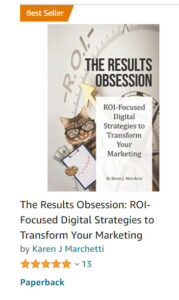Are you still relying on AIDA — Awareness, Interest, Desire, Action — to help guide your sales funnel messaging? AIDA is said to represent the stages that a prospect goes through before making a purchase.
I still hear copywriters, even copywriters trained in direct marketing, refer to using AIDA. AIDA is perhaps a very general way of following the Sales Process. But it doesn’t deliver much insight into the “how” of creating copy that will actually motivate your prospects to move through your sales funnel.
Going Beyond AIDA to Follow the Sales Process
I find that most copywriters need a more specific direction to write the lead paragraph, for example. And most marketers trying to review copy need more guidance about what to look for than just the generalities of AIDA.
I’ve always written response copy to follow the Sales Process, because I’m selling — rather than advertising. I’m trying to change behavior and motivate action, rather than trying to build awareness or image. And that’s an important distinction.
I’m trying to get a lead or drive a sale. I’m essentially taking on the role of “salesperson” and using words on a website or in email messages to get that lead or sale. So I want to use the message components of a Sale that your most successful salesperson would use:
- Remind of some pain or hint of some pleasure (“Do you wish you could . . . ” or “Wouldn’t it be great if you could . . .”)
- Here’s the solution
- Benefits of the solution (the “what’s in it for me” selling points)
- Special Offer (to motivate the action now if ecommerce, or your Lead Generation Offer)
- How to Get It
And if going for an ecommerce sale, add:
- Address Objections
- Go for the Close
A great salesperson knows when to use each step in the Sales Process, and can enhance or modify these steps to fit the selling situation.
Enhance your Sales Process with Emotional Drivers
To really make your headline and lead paragraph hit the key pain points of your target, have you built in some emotion? There are 7 emotional drivers (originally discussed by Bob Hacker) that tend to be most effective at driving action:
- Anger (“Does your blood boil when you think about . . .”)
- Exclusivity (“Wouldn’t you like to have the secret to . . .”)
- Flattery (“Only leaders like you will benefit from . . .”)
- Fear (“Could this happen to you?”)
- Guilt (“How would you feel if you could have prevented . . .”)
- Greed (“When you’re not happy with just ‘good’ results . . .”)
- Salvation (“Finally, a way to . . .”
You’ll typically find 2 or 3 emotional drivers that might make sense for you. Choose one, and try to incorporate it into your headline and lead-in paragraph. (For any copy effort, select one emotional driver. You can test others against it, if you like more than one.)
You should find that using an emotional driver gives you new, more hard-hitting ideas for writing your headline and your “remind of pain/hint of pleasure” lead-in.
Incorporating PAS and Other Enhancements
The “PAS” formula stands for Pain, Agitation, Solution. The enhancement here is to go into more detail about the pain in the “agitation” phase, sometimes referred to as “elongated pain.” We’ve found this to be helpful when selling complicated solutions that may address more than one area of pain. For example, for our client that develops pricing and profitability software systems for banks, we tried to draw the reader in with numerous pain statements to “agitate” the pain:
- Are you tired of managing profitability through a “rear-view mirror”?
- Are you still pricing for relationship profitability on manual spreadsheets — and juggling data from multiple systems?
- Are you struggling to modify your rates, products, and pricing strategies in real time?
Note the pain words of “tired”, “juggling”, and “struggling” in each statement. You may find that an elongated pain discussion within your own Sales Process makes sense for your product or service.
“Paint” Enhances the Pleasure Element
It may make more sense for you to emphasize the “pleasure” direction.
You might want to “paint” a picture of what life would be like with your solution. Your words might transport the prospect by creating a scene in their mind that they can see themselves enjoying.
- Imagine your life with . . .
- You could start every day . . .
- No more worrying about . . .
Discredit Other Solutions to Enhance Your Benefits
To motivate your prospect to make a decision, you may need to point out what other solutions don’t include that your solution does. Prospects frequently don’t realize the shortcomings of other companies, products, or solutions. When your solution has a clear advantage, be sure to point out what other solutions don’t provide that you do.
For our real estate insurance client:
- You’ll enjoy more protection for specific-to-real-estate risks, something a “bare bones” generic policy used for many industries just won’t provide.
That advantage might not be product-related. For one of our clients that sells online courses:
- You can reach a real person by phone 7 days a week, 6am to 10pm PST should you need us. You’ll talk with someone with more than 10 years experience in understanding licensing and renewal requirements — something many other companies can’t say.
And for our client that sells to research labs:
- You’ll have direct access to our scientists when you call with questions (if you’ve been frustrated by the limited knowledge of phone reps from other companies, you know what a benefit this is)!
Enhance the Sell by Pointing Out Consequences of No Action
Be sure to point out the downside of not taking advantage of your offer now:
- Every day that you delay could mean . . .
- Don’t let another day go by without . . .
- Don’t wait to start getting more . . .
Especially if you can quantify your benefits, use those numbers to point out what the prospect will be missing each and every day without your solution.
Your sales funnel needs persuasive copy that will motivate your visitor to take the next step. Use the steps in the Sales Process as a basis for your funnel message. Then, consider enhancements that will make your message even more persuasive.
Excerpted from our new Amazon best-selling book, “The Results Obsession: ROI-Focused Digital Strategies to Transform Your Marketing”
Learn more about The Results Obsession and see the Table of Contents
 The book includes 6 copywriting chapters:
The book includes 6 copywriting chapters:
- Messaging Strategy for Copy that Sells (copy approaches, emotional drivers)
- Great Copy: How to Recognize, Write, and Refine It (writing headlines, engaging leads, and copy that follows the sales process)
- Crafting Great Copy: Part 2 (all the wordsmithing details to craft the best copy of your life)
- Website Content Strategy and Offers
- Website Copy that Sells
- High Impact Email Strategies
- Creating Email to Drive Leads and Sales






Leave A Comment